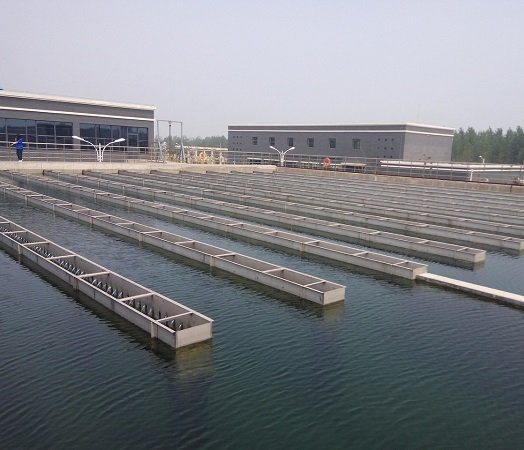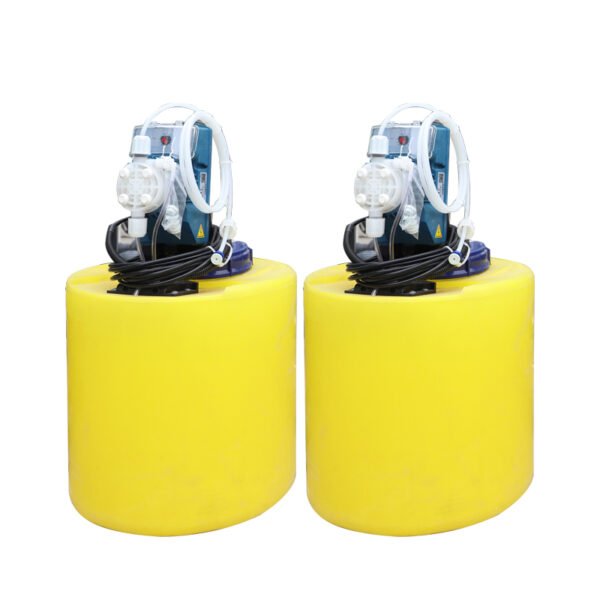
We will explain Chlorination in Water Treatment facilities and applications. With the rise in waterborne diseases, water treatment has become a crucial process in our day-to-day lives. Of the many methods used for water treatment, chlorination remains one of the most popular and effective. This guide explores the process of chlorination and its role in water treatment.
Understanding Chlorination
Chlorination refers to the process of adding chlorine or chlorine-based substances to water. So, this chemical method helps oxidize and disinfect the water, making it safe for public consumption. The chlorination process can effectively deal with pathogens, microorganisms that can cause diseases in humans, accordingly.
Acting as an efficient disinfectant, chlorine damages the cell membrane of microorganisms, disrupting their survival processes such as cell respiration and DNA activity. Hence, this results in the inactivation of the microorganisms, making the water safe for consumption.
The Historical Perspective of Chlorination in Water Treatment
The use of chlorine as a disinfectant dates back to over a century ago. Discovered in Sweden in 1744, chlorine was initially used to remove odors from water, as it was believed that odors transmitted diseases. It wasn’t until 1890 that chlorine’s effectiveness as a disinfectant was recognized, leading to its widespread use in water treatment processes, accordingly.
Chlorination first began in Great Britain, then expanded to the United States in 1908, and later to Canada by 1917. Today, it is the most popular method of disinfection and is used for water treatment worldwide.
The Role of Chlorination in Water Treatment
Chlorination plays a vital role in water treatment. It eliminates bacteria and viruses, making the water safe for consumption. However, it should be noted that chlorination cannot inactivate all types of microbes. Some protozoan cysts are resistant to the effects of chlorine.
Nonetheless, in situations where protozoan cysts are not a primary concern, chlorination is an effective disinfection method. It is inexpensive, effective against many contaminants, and relatively easy to implement compared to other water treatment methods.

The Chlorination Process in Detail
Chlorination is not bound to a specific point in the water treatment process. So, tt can be done at any stage and each point of application controls a different water contaminant concern.
- Pre-chlorination: This involves the addition of chlorine to the water almost immediately after it enters the treatment facility. Pre-chlorination aims to eliminate algae and other aquatic life from the water and control biological growth throughout the water treatment system.
- Disinfection before filtration: Chlorination can also be done just prior to filtration and after sedimentation to control biological growth, remove taste and odors, and remove color from the water.
- Post-chlorination: Usually done as the final step in most treatment plants, the main objective of this chlorination stage is to disinfect the water and maintain chlorine residuals that will remain in the water as it travels through the distribution system.
The Impact of Chlorination on Microorganisms
Chlorine plays a critical role in inactivating microorganisms. Hence, it damages the cell membrane of the microorganisms, which weakens them, allowing the chlorine to enter the cell and disrupt cell respiration and DNA activity. These two processes are crucial for cell survival.
Chlorine Residuals and Breakpoint
When chlorine is added to water during the treatment process, it results in the formation of hypochlorous acid (HOCl) and hypochlorite ions (OCl-), the main disinfecting compounds in chlorinated water.
Chlorination vs. Other Disinfection Methods
While chlorination is a popular and effective method for water disinfection, other methods like ultraviolet (UV) disinfection, ozone disinfection, and silver for water disinfection also exist. Each method has its advantages and disadvantages.
- Ultraviolet (UV) disinfection: UV light kills microorganisms by damaging their DNA and RNA, thus inhibiting their ability to reproduce. UV disinfection does not produce chemical by-products that can affect health. However, it is unsuitable for turbid water containing a high percentage of solid suspended matter or soluble organic matter.
- Ozone disinfection: Ozone is a triatomic form of oxygen (O3) and has powerful oxidizing properties due to its strong oxidation-reduction potential. It can effectively disinfect water by killing microorganisms. However, ozone can produce by-products like carboxylic acids, aldehydes, and ketoacids, which can be harmful in high concentrations.
- Silver for water disinfection: Silver has antimicrobial properties and can be used for water disinfection. It acts by binding with the proteins of microbial cell walls, disrupting their metabolic processes and leading to cell death. Silver disinfection does not produce harmful by-products, but it can be corrosive and may require resistant materials for handling.
The Role of Chloramine in Water Treatment
An alternative to chlorination is the use of chloramine. It is a group of compounds containing chlorine and ammonia. The specific type of chloramine used for water disinfection is monochloramine. It is mixed into water at levels that kill germs but are safe to drink.
Industrial Water Treatment Systems and Chlorination
In industrial settings, chlorination is often part of a larger water treatment system. These systems may include other components like reverse osmosis systems, chemical dosing systems, and water filtration tools. Meanwhile, companies like Chunke Water Treatment offer comprehensive water treatment solutions, including seawater desalination and industrial water treatment systems, that incorporate chlorination as a key step in the disinfection process.
In Summary
Chlorination is a critical part of water treatment, helping to ensure the safety of drinking water by effectively killing harmful microorganisms. Whether used in isolation or as part of a broader water treatment system, the role of chlorination in maintaining public health cannot be overstated. It remains one of the most widely used and effective methods of disinfection in the world today.

